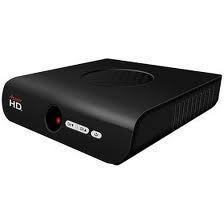Digital to Analog TV Converter
Digital converter boxes receive the digital over-the-air ATSC (signals broadcast by local stations. These boxes have their channel tuners and can include closed-captioning decoding, V-chip 2.0 ratings, program guides, and their own remote control. Like a VCR, the converter box uses your television for the display and sound.
Digital converter boxes have a coaxial input which connects to an ATSC-compatible antenna. For output, the converter box will also have a coaxial connector. Many televisions already have coaxial connectors and will require only a cable to connect to the television. Older television sets may have twin-lead terminals, and may require a simple, commonly-available adapter. Some televisions have both coaxial and twin-lead terminal inputs; the coaxial input is the more robust of the two.
A Little History Behind Broadcast Television
The technology behind analog broadcast television has not changed significantly in many decades. In the United States, for example, the National Television System Committee standard developed back in the 1950’s consisted of 525 lines of resolution at just under 30 frames per second. The PAL and SECAM standards had 625 lines of resolution. These standards were significantly limited by the technology of the time period during which they were developed.
The New ATSC Standards
The Advanced Television Systems Committee, an industry trade group established in 1982, developed new standards for higher quality digital television. The ATSC established 18 new formats for broadcast television, including the standards most commonly discussed in reference to high-definition television: 720p, 1080i, and 1080p. However, these new standards are completely incompatible with older television sets. Digital-to-analog TV converters will be required to view broadcasts using the newer ATSC standards.


Comments - No Responses to “Digital to Analog TV Converter”
Sorry but comments are closed at this time.